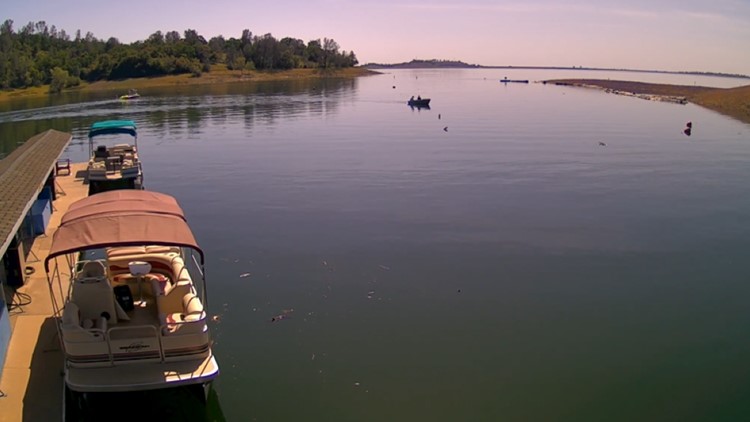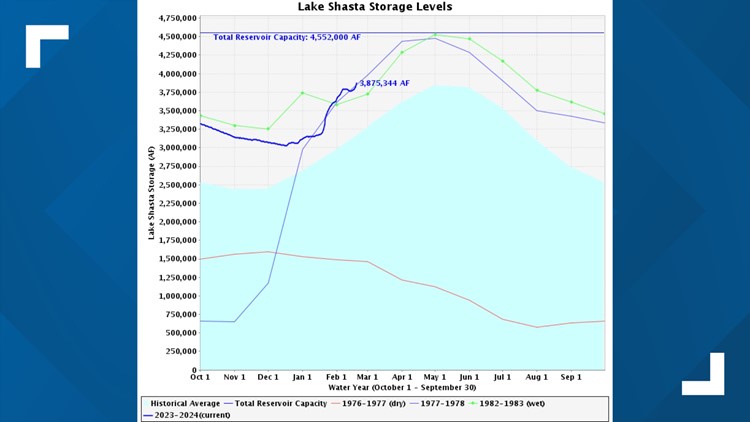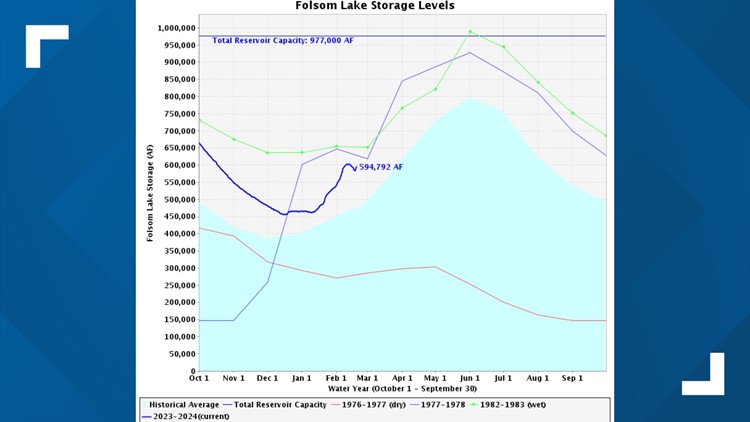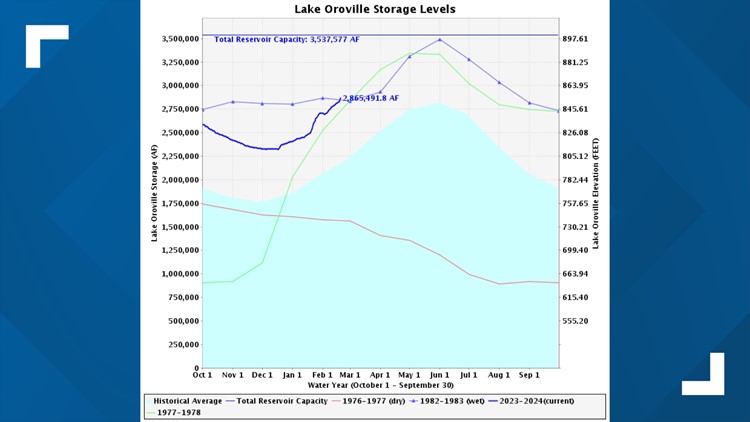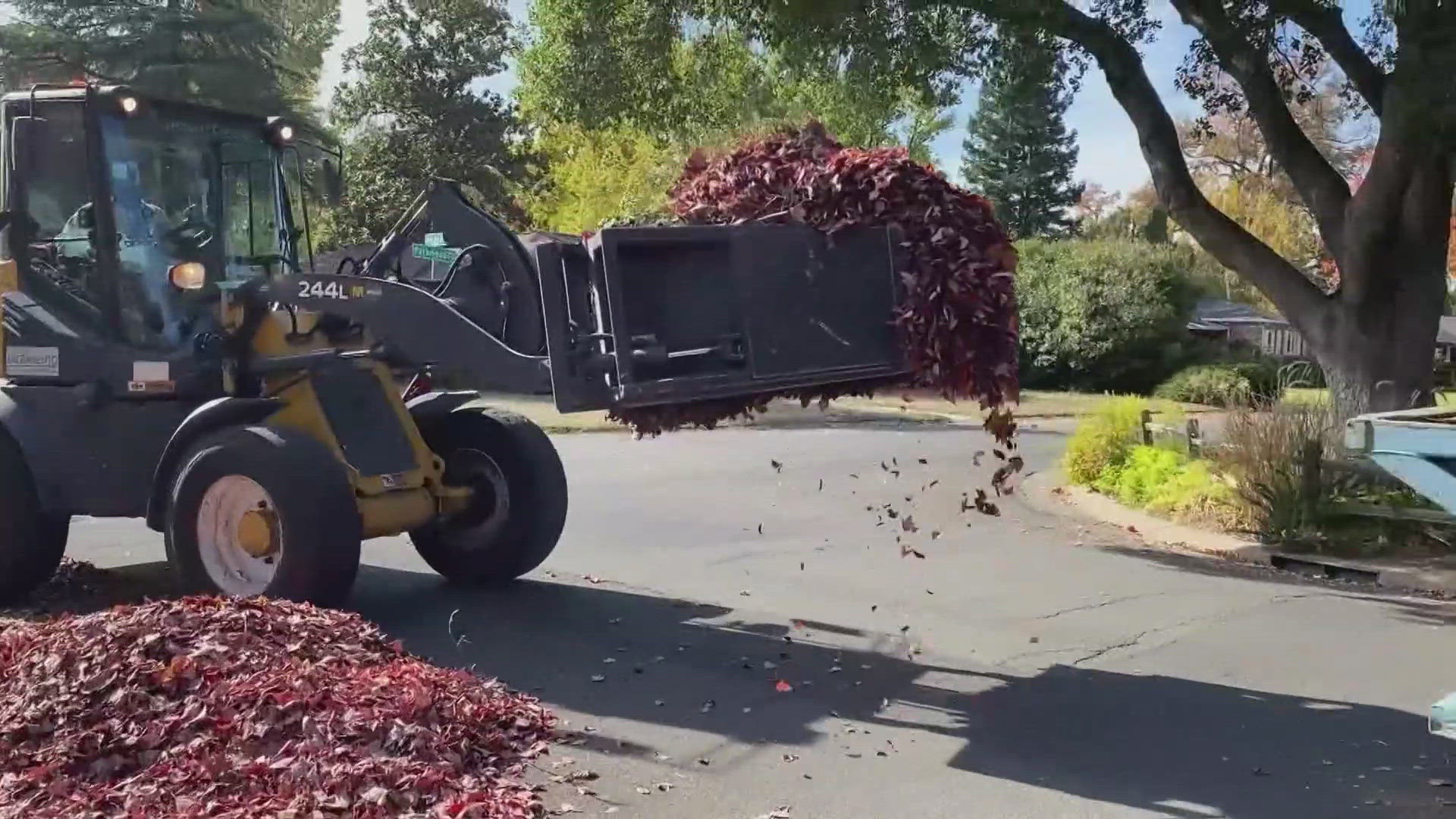SACRAMENTO, Calif —
A wet, snowy January and start to February have all but locked up another year of drought-free conditions for most of California.
Thanks to last year's record wet winter, reservoirs remained at healthy levels throughout the dry summer months as the record snowpack and subsequent melt off period flowed into them.
After the melt-off period, Lake Shasta — the keystone of the Central Valley Project — was at 98% capacity, Oroville was at 100% capacity and Folsom Lake was nearly full at 95% capacity. These bodies of water were quite parched heading into the winter due to the three years of drought preceding the past winter's deluge and ranged from 25-32% capacity before the atmospheric river events rolled in.
As of Feb. 20, Shasta is at 85% of capacity (122% of historical average), Oroville is at 81% (132% of historical average) and Folsom is 61% full (125% of historical average).
Reservoir levels 2/20
Both Shasta and Oroville are fed by Northern Sierra snow melt. As of February 20, the Northern Sierra has reached 99% of average to date and 77% of the April 1 average, which is the date when the snowpack typically peaks. Folsom is fed by the American River, which originates south of Lake Tahoe in the Central Sierra. The Central Sierra is at 81% of average to date while the statewide percent of average is at 85%, up from 28% on January 1.
A few more inches of snow are possible Wednesday before high pressure builds in to end the work week.


